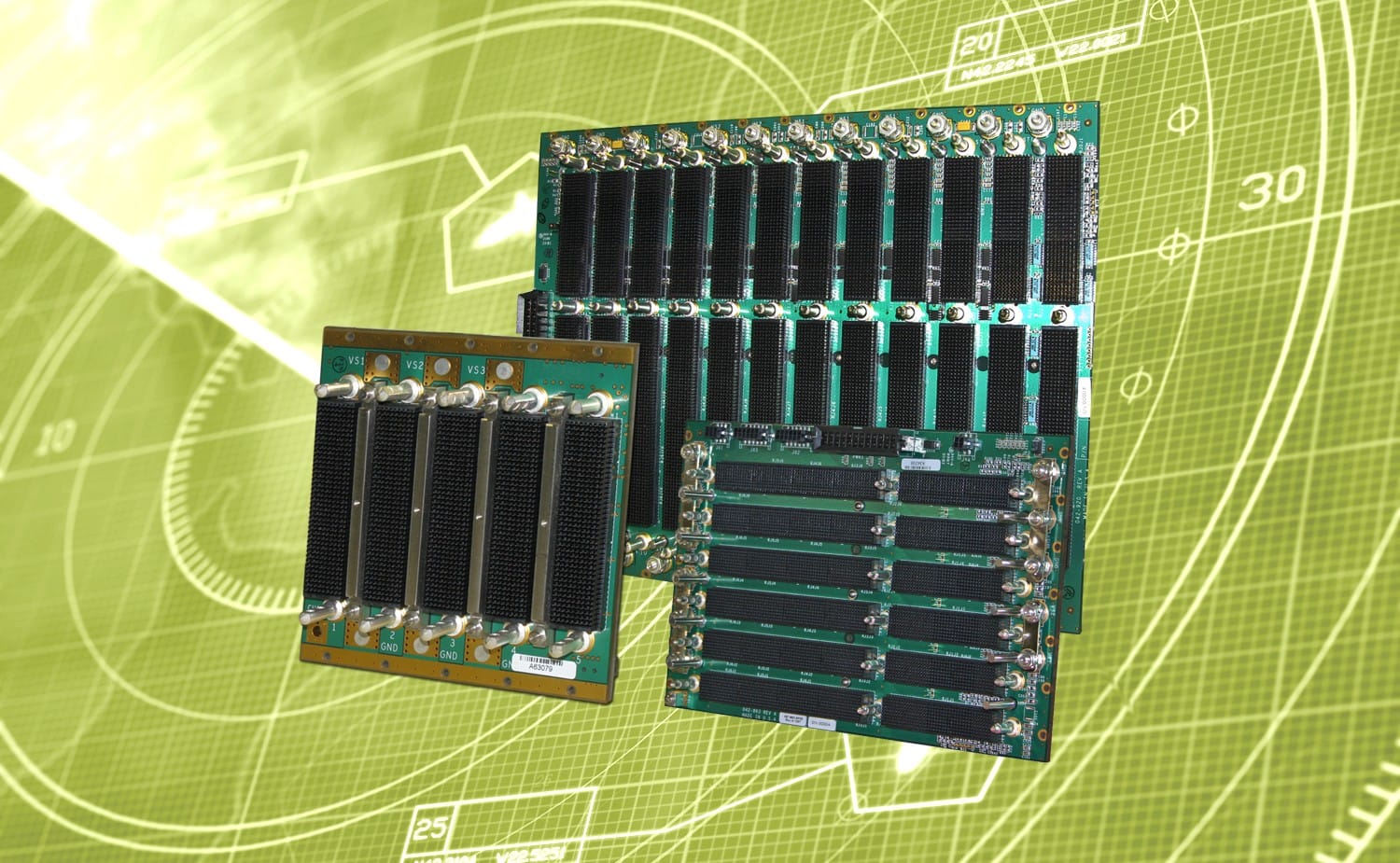In the ever-evolving landscape of computer technology, the role of robust, efficient and hi-speed backplanes has become increasingly pivotal. Backplanes, often considered the backbone of computer systems, are crucial in ensuring high-performance computing. This article delves into the various types of backplanes like SOSA, OpenVPX, VME, backplanes, highlighting their unique benefits and applications in modern computer systems.
Understanding Backplanes:
A backplane is essentially a circuit board with connectors and slots that allow various components of a computer system, like motherboards, drives, and other peripherals, to communicate with each other. Unlike traditional motherboards, backplanes provide a more modular and scalable approach to building complex systems.
SOSATM Backplane:
The SOSA (Sensor Open Systems Architecture) backplane represents a new era in modular design. It supports high interoperability and is designed for complex, sensor-based systems commonly used in defense and aerospace industries. The SOSA standard ensures systems are future-proof, scalable, and able to integrate with a variety of components.
OpenVPX Backplanes:
The OpenVPX backplane, is known for its high-speed data transfer capabilities, making it ideal for applications requiring rapid data processing. These backplanes offer enhanced interoperability and flexibility. It supports various data rates and bandwidths, catering to a wide range of applications — from military to industrial sectors.
VME64x Backplane:
The VME64x backplane, an extension of the VMEbus standards, provides increased data transfer rates and broader bandwidth, making it suitable for more demanding applications. Its backward compatibility with older VME standards ensures a broader range of equipment can be integrated, enhancing system longevity and adaptability. VME64x backplanes are still the backbone of many military programs to this day.
Benefits of Advanced Backplanes:
1. High-Speed Data Transfer and Bandwidth Efficiency:
Backplanes like OpenVPX are designed for high-speed data transfer, crucial for applications requiring rapid processing and real-time data analysis. This speed is vital in sectors like defense, aerospace, and high-performance computing where data throughput and bandwidth efficiency are paramount.
2. Modularity and Scalability:
One of the primary advantages of using backplanes is their modular nature. SOSA and OpenVPX backplane systems allow for easy customization and scalability. As computing needs evolve or expand, additional modules can be seamlessly integrated without overhauling the entire system. This scalability is particularly beneficial in military and industrial applications where technology needs to adapt to changing demands.
3. Enhanced Interoperability and Standardization:
The adoption of standards like SOSA, OpenVPX, and VME64x in backplane designs ensures interoperability between components from different manufacturers. This standardization simplifies the design process, reduces costs, and ensures system longevity as components can be easily replaced or upgraded.
4. Improved Reliability and Durability:
Backplanes are engineered to be robust and reliable, often designed to withstand harsh environmental conditions. This makes them ideal for military and aerospace applications where systems must operate reliably under extreme temperatures, vibrations, and other challenging conditions. The durability of backplanes ensures consistent performance and longevity, reducing the need for frequent replacements or maintenance.
5. Optimized Power Distribution and Thermal Management:
Advanced backplane systems are designed with efficient power distribution and thermal management in mind. This optimization is crucial for maintaining the performance and stability of high-power and high-density computing systems, particularly in confined or rugged environments.
6. Simplified Maintenance and Troubleshooting:
The modular nature of backplane-based systems simplifies maintenance and troubleshooting. Faulty components can be quickly identified and replaced without disrupting the entire system. This ease of maintenance is crucial in critical applications where downtime can be costly or dangerous.
7. Future-Proofing and Innovation:
Backplane technologies are continuously evolving to keep pace with advancements in computing. By adopting backplane-based systems, organizations position themselves at the forefront of technological innovation, ensuring their systems remain compatible with future developments.
Comprehensive Backplane Engineering Excellence at Atrenne
Atrenne offers an extensive range of backplanes supporting various system architectures, including SOSA, OpenVPX, VME, and cPCI. Their catalog features products like the VME64x VITA 1.7 Backplane, Gen-4/5 OpenVPX Backplane, and several unique solutions tailored to different applications. These backplanes are designed to meet diverse customer needs, ensuring high compatibility and performance in various industries.
Atrenne extends its expertise beyond just providing a diverse range of backplanes. They excel in designing and manufacturing rugged systems specializing in thermal and power management, but also “Build to Print” manufacturing, offering clients the ability to have their existing designs expertly manufactured to the highest standards. Their design solutions are tailored to meet specific needs, ensuring that each product not only fits but enhances the client’s system. Additionally, Atrenne has over 50 years of experience designing backplane solutions.
For more detailed information on our backplane capabilities, contact us today or explore our backplane solutions.
